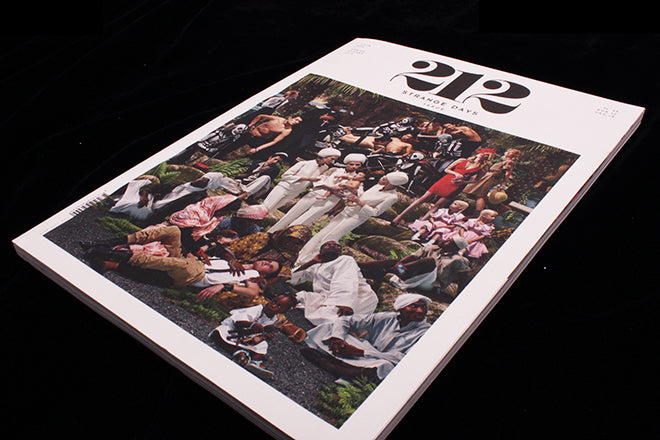
212 #1
On Monday we were At Work With LAW in the UK and yesterday we were in France with Télévison. Today we head to the Eastern edge of Europe, beyond the EU, and discover 212, a new magazine from Turkey.
The new magazine joins Holiday, Victory and Luncheon in the ‘who’s the hugest’ stakes, its 186 large-format pages making it a weighty beast of a publication. Its name comes from Istanbul’s European phone code, a number which also happens to be the international code for New York. Editor Heval Okcuoglu makes light of this in her opening letter, claiming it as a ‘misdirection we hope is characteristic of the magazine’s ethos…’ as she introduces the magazine as being both about and beyond its home city.
Like those other large magazines, 212 uses its scale to refer to the magazines of the fifties and sixties. Its monochrome text pages and acres of open space present a classic editorial experience, giving it an air of permenance that belies its newcomer status. Smart and serious looking, it also has the confidence to be playful at points, like the opening of this short story (above) with its writerly curl of an opening line. The full page illustration by Edith Carron is also typical for its simple full-page presenatation.
Big, bold and satisfying, the imagery throughout the issue is impressive in execution and reproduction. ‘Fault Lines’ is a beautiful photo-essay by UK photographer George Georgiou examines the contrast between old and new Turkey and includes this shot from the city of Sivas (above).
About half the magazine concerns Turkey; the rest casts further and includes this essay on the modern state of community by Paul Chan. Again we find the starkly plain design broken by a little detail from the main illustration by Andreas Topfer (above).
Later in the issue we’re treated to the super-saturated imagery of Martin Parr in a self-curated series of his beach photographs (above). Again the scale is the point – being able to enjoy these strong, graphic images so large makes them fresh.
Parr’s photographs are in stark contrast to the black and white portrait series by Emre Dogru of Anotolian musicians (above). Accompanied by brief biographies, this is a survey of the generations of musicians fusing local culture with Western pop.
There’s fashion too, often using dramatic locations, like these monuments to Soviet socialism in Bulgaria (above). Sinan Tuncay’s digitally manipulated images turning Italian women and their furs into grotesque caricatures (below) offers a more critical and amusing take on fashion. They echo the earlier series of Charles Freger’s pagan traditions (also below).
Elsewhere, there’s a lengthy interview with film maker Adam Curtis (always an interesting subject), more short stories and a look back at an era of copyright-free Turkish cinema.
212 is hard to pigeonhole; this launch issue is themed ‘Strange Days’ and the introduction talks of the massive changes taking place today acros the world, how our languages can’t keep up with those changes, and how billions of humans are struggling to cope. It concludes ‘We think it’s best to laugh’, yet the magazine offers a far more positive outlook than that implies.
Sometimes grandiose scale disuguises an empty idea, but not here. 212’s editorial ambition matches its physical presence. Not all the content is startlingly original, but the overall mix is certainly fresh and the art direction and design brings a sureness and confidence to bear that means 212 is our Magazine of the Week this time round. It’s great to see these big, heavyweight publications making such a strong, almost defiant, use of print.
Editor in chief: Heval Okcuoglu
Creative director: Ilkay Gurpinar
Art direction: Balwant Ahira












